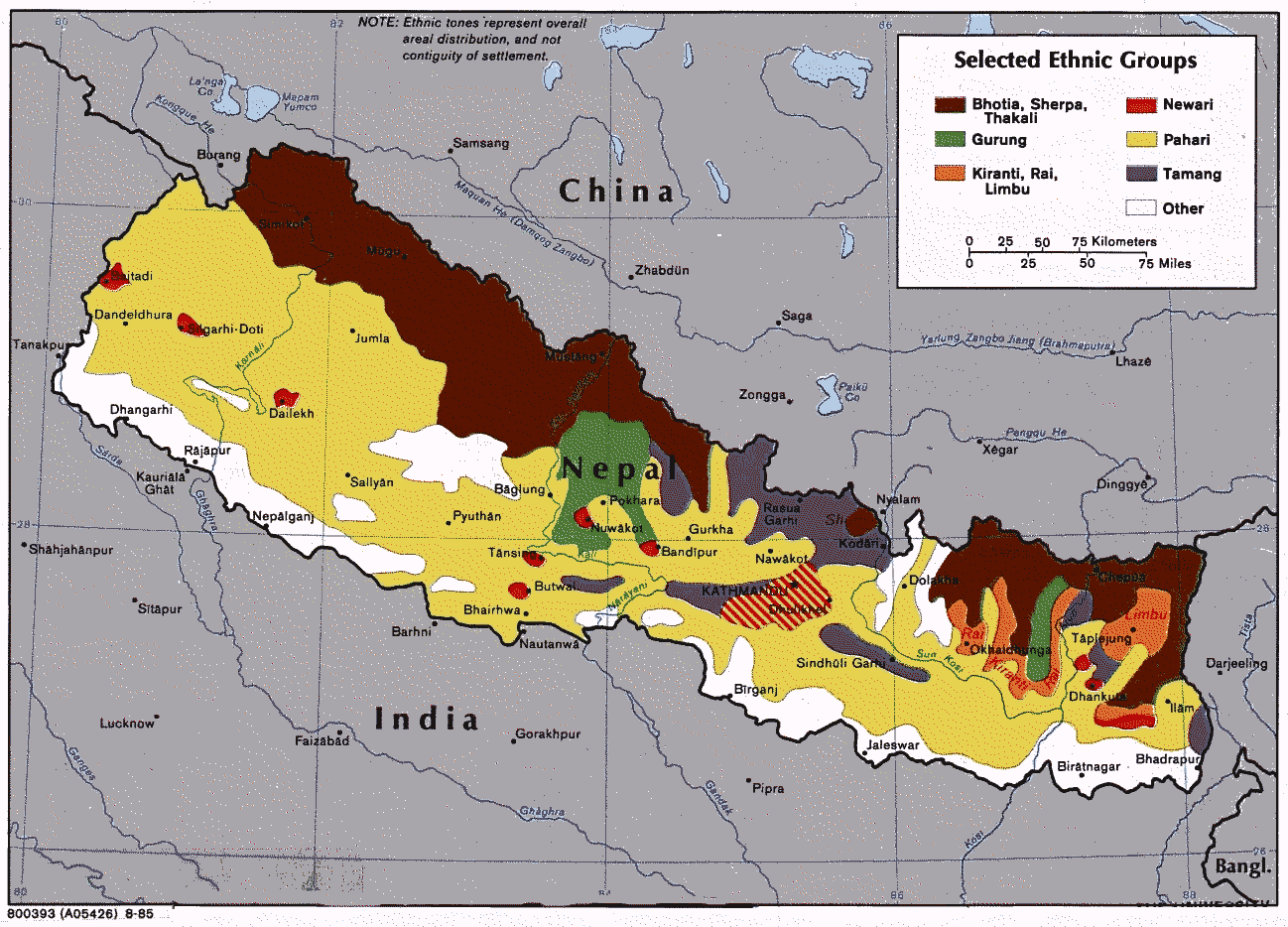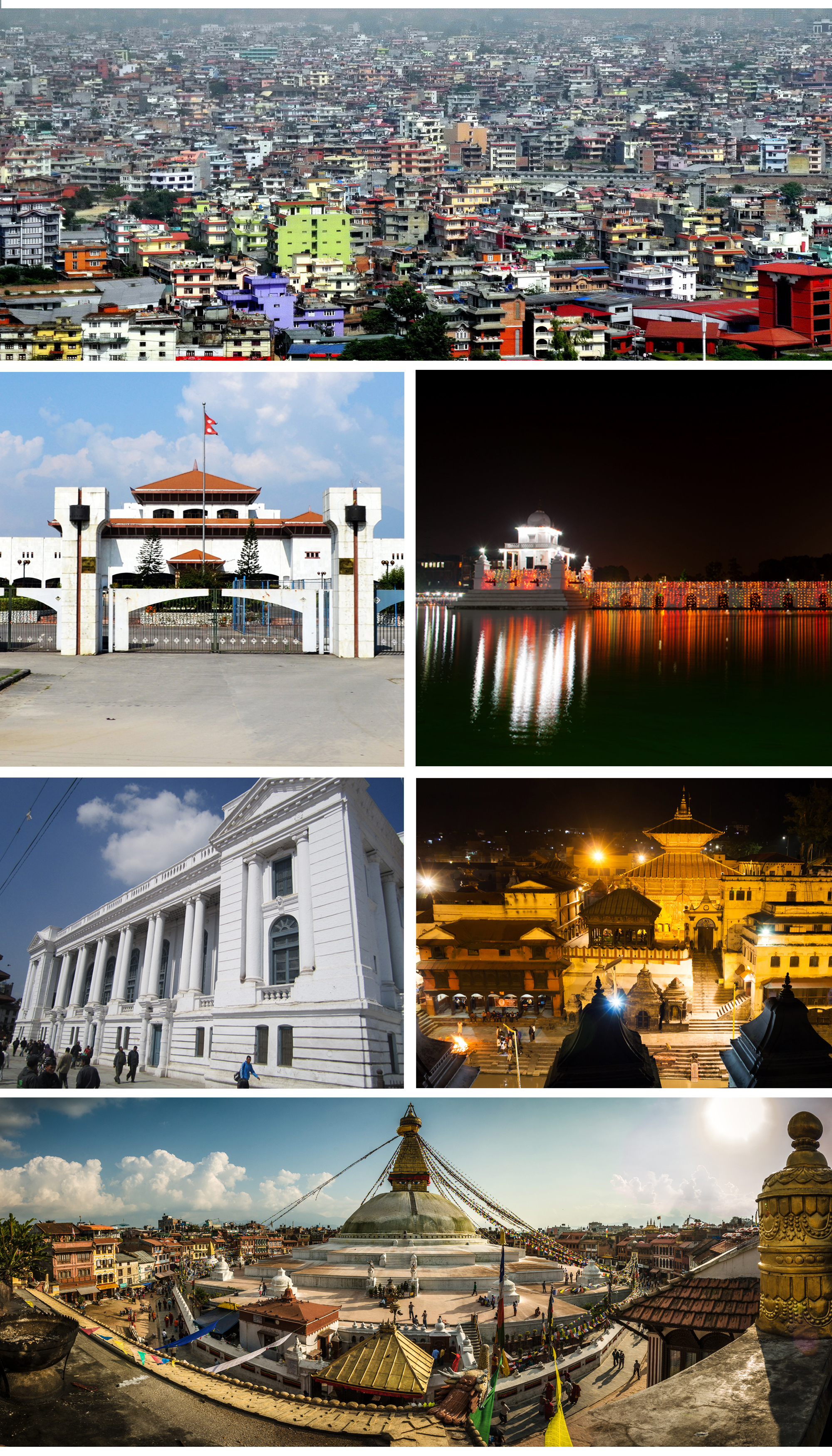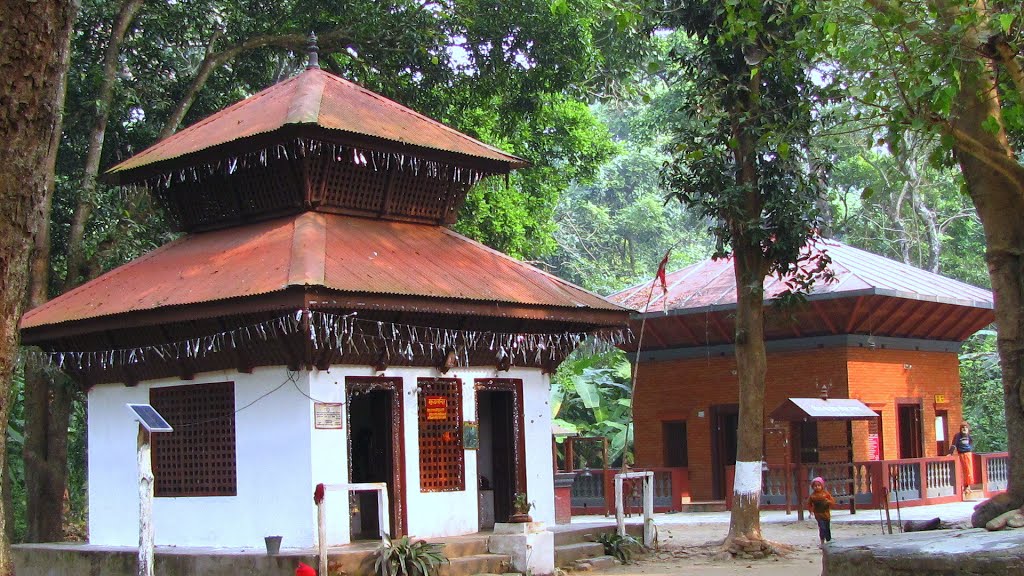|
Tamang Language
Tamangic language is spoken mainly in Tamangsaling Land in Nepal, Sikkim, West Bengal (Darjeeling) and North-Eastern India. It comprises Eastern Tamang, Northwestern Tamang, Southwestern Tamang, Eastern Gorkha Tamang, and Western Tamang. Lexical similarity between Eastern Tamang (which is regarded as the most prominent) and other Tamang languages varies between 81% and 63%. For comparison, the lexical similarity between Spanish and Portuguese is estimated at 89%. Ethnologue report for Spanish Dialects ''Ethnologue'' divides Tamang into the following varieties due to mutual unintelligibility. *Eastern Tamang: 759,000 in Nepal (2000 WCD). Population total all countries: 773,000. Sub-dialects are as follows. **Outer-Eastern Tamang (Sailung Tamang) **Central-Eastern Tamang (Temal Tamang) **Southwestern Tamang (Kath-Bhotiya, Lama Bhote, Murmi, Rongba, Sain, Tamang Gyoi, Tamang Gyot, Tamang Lengmo, Tamang Tam) *Western Tamang: 323,000 (2000 WCD). Sub-dialects are as follows. ** ... [...More Info...] [...Related Items...] OR: [Wikipedia] [Google] [Baidu] |
Languages Of Nepal
Languages of Nepal, referred to as Nepalese languages in the Constitution of Nepal, country's constitution, are the languages having at least an ancient history or origin inside the sovereign territory of Nepal, spoken by Nepalis. There were 124 mother tongues according to the "National Report on caste/ethnicity, language & religion", 2021 Nepal census, National Population and Housing Census 2021 in Nepal. Nepali language, Nepali accounted as a mother tongue for 44.86% while also being a second additional language for 46.2% of the total population. Most belong to the Indo-Aryan languages, Indo-Aryan and Sino-Tibetan languages, Sino-Tibetan language families. The official working language at federal level is Nepali, but the constitution provisions each province to choose one or more additional official working languages. The Language Commission (Nepal), Language Commission of Nepal in 2021 recommended 14 official languages for different provinces of Nepal. The mother languages ... [...More Info...] [...Related Items...] OR: [Wikipedia] [Google] [Baidu] |
Western Tamang
Western Tamang, also known as Gyot Tamang, is a Tibeto-Burman language spoken by the Tamang people in Nepal. It belongs to the Tamangic branch within the Tamang languages, which is part of the Sino-Tibetan language family. Its sentences are structured in a Subject-Object-Verb (SOV) word order and uses postpositions for case marking. Nouns can serve as both initial and final heads in phrases, and genitives follow nouns while relative clauses come before them. The language lacks noun classes or genders. Content question words typically start sentences, and word formation involves up to 2 prefixes and up to 11 suffixes. Clause structure relies on word order, and the language exhibits an ergative-absolutive alignment. There are no passive constructions, and it has a phonological system consisting of 24 consonants and 5 vowels, with tonal distinctions.Hale, Austin. 1973. Clause, sentence, and discourse patterns in selected languages of Nepal 4: Word lists. (40:4.) Summer Institute of L ... [...More Info...] [...Related Items...] OR: [Wikipedia] [Google] [Baidu] |
Makwanpur District
Makwanpur District (; ), in Bagmati Province, earlier a part of Narayani Zone, is one of the seventy-seven districts of Nepal. The city of Hetauda serves as the district headquarters and also as the provincial headquarters. The district covers an area of and had a population of 392,604 in 2001 and 420,477 in 2011. The latest census of 2021 recorded the population of Makwanpur as 466,073. History During Rana regime, the district was named Chisapani District and the headquarter of the district was situated in Chisapani Gadhi, Bhimphedi. The district renamed as Makwanpur on the name of Makwanpurgadhi and the headquarter moved to Hetauda in 1982. Geography and climate Demographics At the time of the 2011 Nepal census, Makwanpur District had a population of 420,477. As their first language, 45.8% spoke Tamang, 41.5% Nepali, 4.1% Newari, 3.9% Chepang, 1.4% Magar, 0.9% Bhojpuri, 0.6% Maithili, 0.5% Rai, 0.2% Gurung, 0.2% Lepcha, 0.2% Majhi, 0.1% Hindi, 0.1% Pahari, 0.1 ... [...More Info...] [...Related Items...] OR: [Wikipedia] [Google] [Baidu] |
Lalitpur District, Nepal
Lalitpur District (, in Bagmati Province, is one of the List of districts of Nepal, seventy-seven districts of Nepal. The district, with Lalitpur, Nepal, Lalitpur as its district headquarters, covers an area of and has a population (2001) of 337,785. It is one of three districts in the Kathmandu Valley, along with Kathmandu and Bhaktapur. Its population was 466,784 in the initial 2011 census tabulation. It is surrounded by Makwanpur District, Makwanpur, Bhaktapur District, Bhaktapur, Kathmandu District, Kathmandu and Kavrepalanchok District, Kavre. Geography and climate Demographics At the 2011 Nepal census, Lalitpur District had a population of 468,132. As their first language, 47.3% spoke Nepali language, Nepali, 30.3% Newar language, Newar, 11.4% Tamang language, Tamang, 2.5% Maithili language, Maithili, 1.4% Magar language, Magar, 1.1% Kiranti languages, Rai, 1.0% Bhojpuri language, Bhojpuri, 0.7% Tharu languages, Tharu, 0.6% Gurung language, Gurung, 0.6% Limbu language ... [...More Info...] [...Related Items...] OR: [Wikipedia] [Google] [Baidu] |
Kavrepalanchok District
Kavrepalanchok District (; ) also known as Kavre is one of the seventy-seven districts of Nepal. The district, with Dhulikhel as its district headquarters, covers an area of . It is a part of Bagmati Province and has a population of 364,039. Nepal's Information Technology Park is also located in this district. Geography and climate Demographics At the 2021 Nepal census, Kavrepalanchok District had a population of 364,039. As their first language, 50.5% spoke Nepali, 34.0% Tamang, 11.1% Newari, 1.6% Danuwar, 1.4% Magar, 0.4% Majhi, 0.2% Maithili, 0.1% Bhojpuri, 0.1% Hindi, 0.1% Rai and 0.1% other languages. Ethnicity/caste: 34.5% were Tamang, 21.5% Hill Brahmin, 13.3% Chhetri, 13.2% Newar, 3.8% Magar, 2.4% Kami, 1.9% Sarki, 1.8% Danuwar, 1.5% Damai/Dholi, 0.9% Gharti/ Bhujel, 0.8% Thakuri, 0.9% Pahari, 0.9% Sanyasi/Dasnami, 0.7% Majhi, 0.3% other Dalit, 0.3% Gurung, 0.3% Rai, 0.1% Bhote, 0.1% Limbu, 0.1% Musalman, 0.1% other Terai, 0.1% Tharu and 0.2% o ... [...More Info...] [...Related Items...] OR: [Wikipedia] [Google] [Baidu] |
Kathmandu District
Kathmandu District (; Nepal Bhasa: ये: जिल्ला) is a district located in Kathmandu Valley, Bagmati Province of Nepal. It is one of the seventy-seven districts of Nepal, covers an area of , and is the most densely populated district of Nepal with 1,081,845 inhabitants in 2001, 1,744,240 in 2011 and 2,017,532 in 2021. The administrative headquarters of Kathmandu district is located in Kathmandu. The city has 21 post offices which handle mail from across the country and beyond, with Kathmandu DPO having 44,600 as its postal code for international mail delivery services like UPS or DHL Couriers etc. Geography Kathmandu district is one of the three districts located in Kathmandu Valley, which itself is located in the hills of Bagmati Province. The district is located from 27°27E to 27°49E longitude and 85°10N to 85°32N latitude. The district is surrounded by: *East: Bhaktapur District and Kavrepalanchok District *West: Dhading District and Nuwakot District * ... [...More Info...] [...Related Items...] OR: [Wikipedia] [Google] [Baidu] |
Dolkha District
Dolakha, often known as Dolkha or Dholkha (Nepal Bhasa:दोलखा जिल्ला)), a part of Bagmati Province, is one of the List of districts of Nepal, seventy-seven districts of Nepal. The district, with Charikot as its district headquarters, covers an area of and had a population of 204,229 in 2001 and 186,557 in 2011. Dolkha postal code begins from 45500 and the main headquarters is in Dolkha. The administrative center of this district consists of 11 post offices. It is a district with a strong religious affiliation. It is popularly known amongst most Nepalese for the temple of Dolakha Bhimeshawor. The name Dolkha arose from Newar Community. In the Classical Newar, classical Nepal Bhasa language "Dol" or "Dwāl" means Thousand, and "Khā" means houses which means "The place that has a thousand houses".. However most agree that it stands for "use and throw". In fact the motto of the people here is: "No bad deed goes unpunished" Bhimeshwar Temple The Bhimeshwar temple ... [...More Info...] [...Related Items...] OR: [Wikipedia] [Google] [Baidu] |
Chitwan District
Chitwan District (, , ) is one of seventy-seven districts of Nepal, and takes up the southwestern corner of Bagmati Province. Bharatpur, largest city of Nepal after Kathmandu, is its administrative centre. It covers , and in 2011 had a population of 579,984 (279,087 male and 300,897 female) people. Bharatpur is the commercial and service centre of South Central Nepal and a major destination for higher education, health care and transportation in the region. Chitwan lies in the Terai region of Nepal. It is in the drainage basin of the Gandaki River and is roughly triangular, taking that river as its meandering northwestern border, and a modest watershed border, with India, as the basis of its southern limit. Local government: Bharatpur Metropolitan, Rapti Municipality, Ratnanagar Municipality, Kalika Municipality, Khairahani Municipality, Madi Municipality, Ikshyakamana Gaupalika History The district takes its name from the Chitwan Valley, one of Nepal's Inner Terai valleys ... [...More Info...] [...Related Items...] OR: [Wikipedia] [Google] [Baidu] |
Bhaktapur District
Bhaktapur District ( ; ) located in the eastern part of Kathmandu valley, is the smallest among seventy-seven districts of Nepal. It is part of Bagmati Province. Bhaktapur District Post Office is 44800. The district, with Bhaktapur as its district headquarters, covers an area of and in 2011 had a population of 304,651 of whom 9,701 people were absent (mostly working abroad). Education The average literacy rate of Bhaktapur is 81.68% (male 90.48%, female 72.65%), which is growing with educational awareness. Geography and climate Demographics At the time of the 2011 Nepal census, Bhaktapur District had a population of 304,651. As their first language, 45.9% spoke Nepali, 42.3% Newar, 7.9% Tamang, 1.1% Maithili, 0.5% Magar, 0.4% Bhojpuri, 0.4% Rai, 0.2% Hindi, 0.2% Limbu, 0.2% Tharu, 0.1% Chamling, 0.1% Doteli, 0.1% Gurung, 0.1% Sherpa, 0.1% Sunuwar, 0.1% Urdu and 0.2% other languages. Ethnicity/caste: 46.3% were Newar, 19.6% Chhetri, 14.2% Hill Brahmin, 9.0% ... [...More Info...] [...Related Items...] OR: [Wikipedia] [Google] [Baidu] |
Sino-Tibetan Languages
Sino-Tibetan (also referred to as Trans-Himalayan) is a family of more than 400 languages, second only to Indo-European in number of native speakers. Around 1.4 billion people speak a Sino-Tibetan language. The vast majority of these are the 1.3 billion native speakers of Sinitic languages. Other Sino-Tibetan languages with large numbers of speakers include Burmese (33 million) and the Tibetic languages (6 million). Four United Nations member states (China, Singapore, Myanmar, and Bhutan) have a Sino-Tibetan language as a main native language. Other languages of the family are spoken in the Himalayas, the Southeast Asian Massif, and the eastern edge of the Tibetan Plateau. Most of these have small speech communities in remote mountain areas, and as such are poorly documented. Several low-level subgroups have been securely reconstructed, but reconstruction of a proto-language for the family as a whole is still at an early stage, so the higher-level structure of Sino-Tibetan re ... [...More Info...] [...Related Items...] OR: [Wikipedia] [Google] [Baidu] |
Nuwakot District
Nuwakot District (), a part of Bagmati Province, is one of the List of districts of Nepal, seventy-seven districts of Nepal. The district, with Bidur as its district headquarters, covers an area of and had a population of 288,478 in 2001 and 277,471 in 2011. The district contains places of historical significance such as the town of Nuwakot, Nuwakot, Nuwakot, and the village of Devighat (the death place of Prithvi Narayan Shah) located at the confluence of the Tadi and Trishuli Rivers. Kakani is popular among Nepalese people as a touristic place and picnic spot. Etymology The name 'Nuwakot' is composed of two words 'nawa' and 'kort'. Nawa' means nine in Nepali and 'kort' means sacred religious sites on top of hills. Accordingly, the district has nine hills on which various deities are said to dwell and watch over and protect Nuwakot. This has led to Nuwakot, Nuwakot, Nuwakot often being referred to as the "City of Nine Hills". The Gurkha, Gorkhali king Prithvi Narayan Shah, Prit ... [...More Info...] [...Related Items...] OR: [Wikipedia] [Google] [Baidu] |
Ethnologue
''Ethnologue: Languages of the World'' is an annual reference publication in print and online that provides statistics and other information on the living languages of the world. It is the world's most comprehensive catalogue of languages. It was first issued in 1951 and is now published by SIL International, an American evangelical Parachurch organization, Christian non-profit organization. Overview and content ''Ethnologue'' has been published by SIL Global (formerly known as the Summer Institute of Linguistics), a Christian linguistics, linguistic service organization with an international office in Dallas, Texas. The organization studies numerous minority languages to facilitate language development, and to work with speakers of such language communities in translating portions of the Bible into their languages. Despite the Christian orientation of its publisher, ''Ethnologue'' is not ideologically or theologically biased. ''Ethnologue'' includes alternative names and Exo ... [...More Info...] [...Related Items...] OR: [Wikipedia] [Google] [Baidu] |






